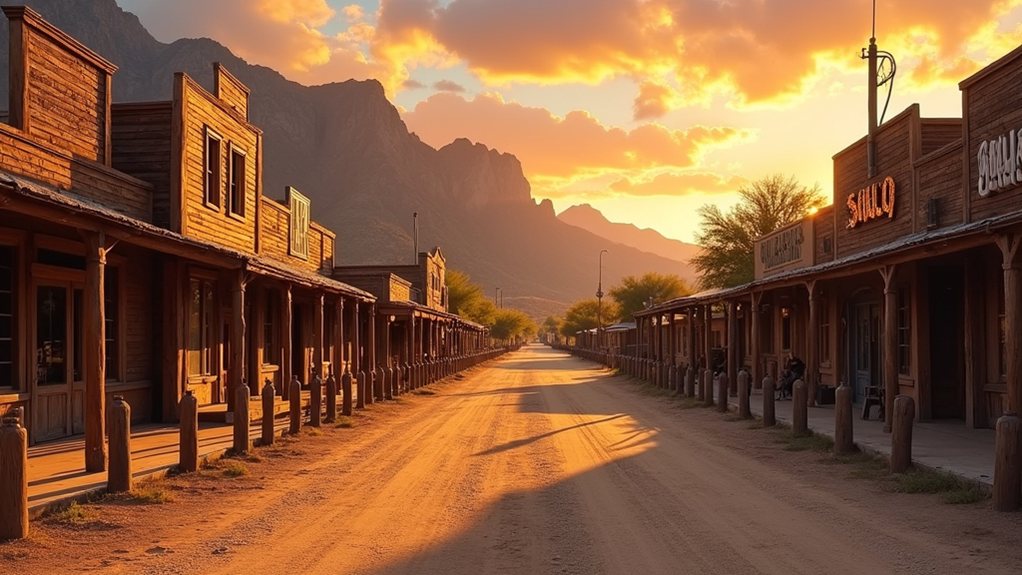Like a phoenix rising from the celluloid ashes, Pioneertown has transformed from a 1940s Western movie backdrop into Joshua Tree’s unexpected cultural jewel. What began as a film set, complete with dusty saloons and hitching posts, now serves up farm-to-table cuisine alongside gallery spaces where desert-inspired art thrives. Locals mingle with visitors at Pappy & Harriet’s, where the mesquite-grilled menu rivals the venue’s storied musical performances. The town’s evolution begs the question: how did Hollywood’s forgotten frontier become California’s hippest desert destination?
A Film Set Reimagined as Desert Cultural Oasis

Housed among the rugged landscape of the Morongo Basin, just a 15-minute drive from the otherworldly Joshua Tree National Park, sits Pioneertown, a living relic of America’s Wild West that wasn’t actually built during the frontier days. Founded in 1946 by actor Dick Curtis and several Hollywood investors including Roy Rogers and Dale Evans, this carefully crafted town began life as a functional movie set designed to replicate an authentic 1880s Western settlement.
A movie set reimagined as authentic frontier town, where Hollywood’s dreams of the Wild West became reality.
Standing at 4,055 feet elevation and surrounded by the majestic Sawtooth Mountains, Pioneertown served as the backdrop for over 50 Western films and TV series like “The Cisco Kid” and “Annie Oakley” during Hollywood’s golden era. The town’s Mane Street Historic District, now listed on the National Register of Historic Places, once bustled with cameras and cowboys, creating the frontier magic that enchanted American audiences.
As Western films declined in popularity, this desert gem transformed itself rather than becoming a ghost town. Today, with approximately 420 residents, Pioneertown has reinvented itself as an artistic and culinary destination where the spirit of freedom permeates every weathered wooden building. The original founders shared a compelling belief that Westerns would remain popular indefinitely, though the town has proven remarkably adaptable. Like many cryptid myths examined in Abominable Science!, Pioneertown demonstrates how cultural fascinations evolve and transform over time.
Pappy & Harriet’s, the town’s legendary honky-tonk, has hosted performances by musical royalty like Paul McCartney, while modern festivals such as Desert Stars draw artists and free spirits to this remote outpost. Visitors can watch gunfight reenactments, then browse local pottery and art studios that line the historic thoroughfare. The vibrant art community continues to thrive, with local artists drawing inspiration from the stunning desert landscapes and pioneer heritage that define the region.
The drive from Yucca Valley, designated as a California Scenic Drive, delivers travelers to a place where history and contemporary culture blend seamlessly. Much like Samantha Brown suggests in her family travel philosophy, the journey to Pioneertown creates unexpected joys along the rugged desert route. Despite surviving the 2006 Sawtooth Complex fire, Pioneertown’s historic structures remain intact, including Pioneer Bowl, opened by Rogers himself and still welcoming bowlers today.
For those seeking authentic experiences, accommodations range from the rustic Pioneertown Motel to camping at the Pioneertown Corrals, perfect jumping-off points to investigate nearby protected lands or simply soak in the creative energy of this reimagined Western haven.






